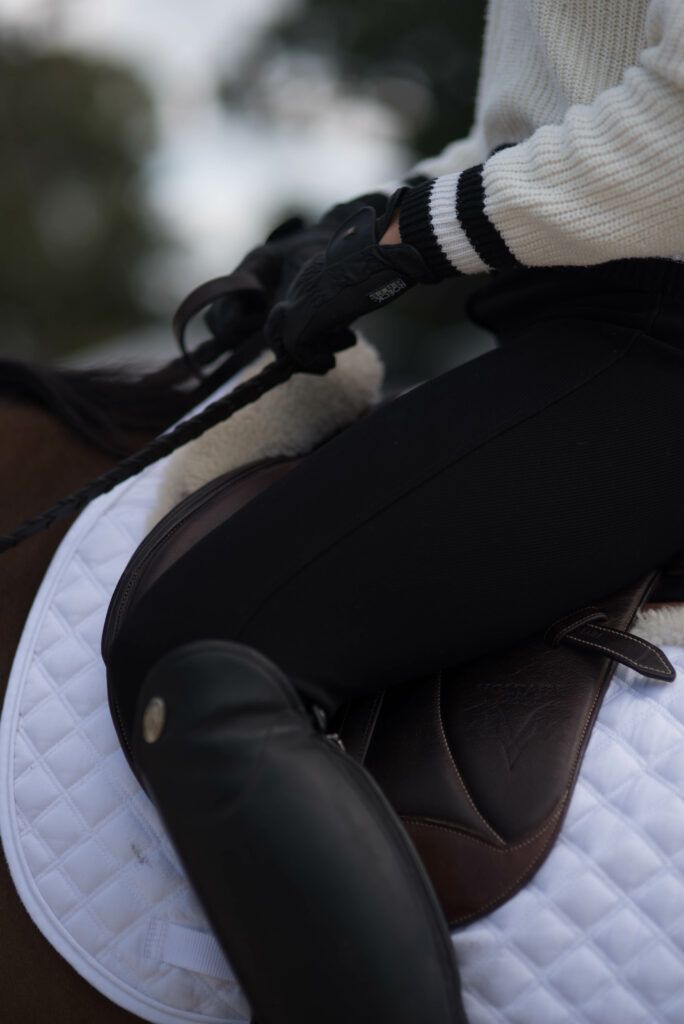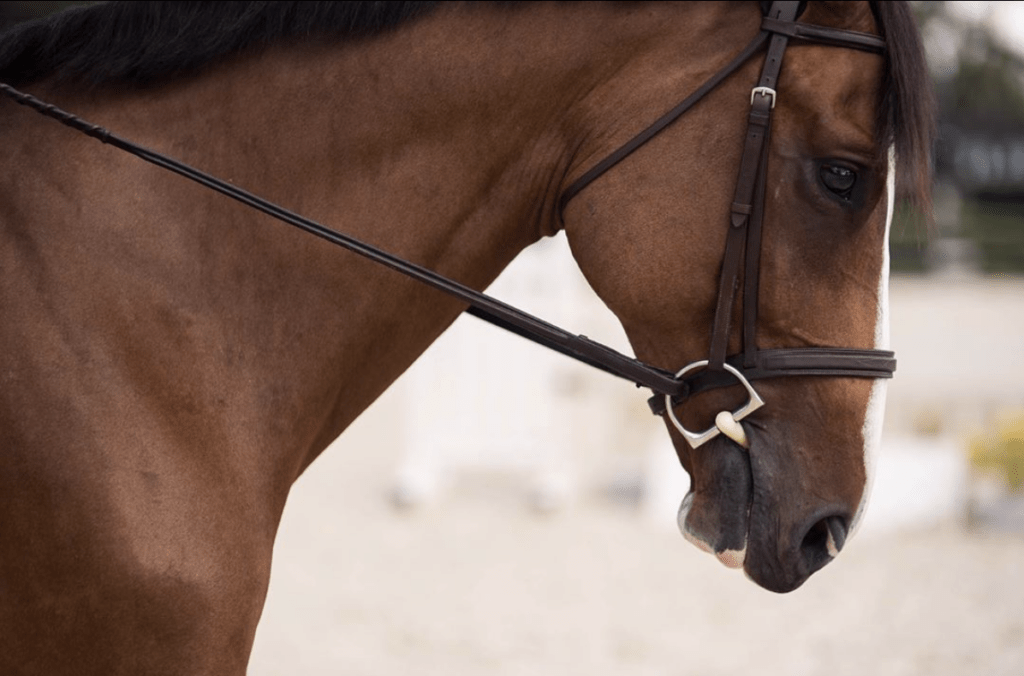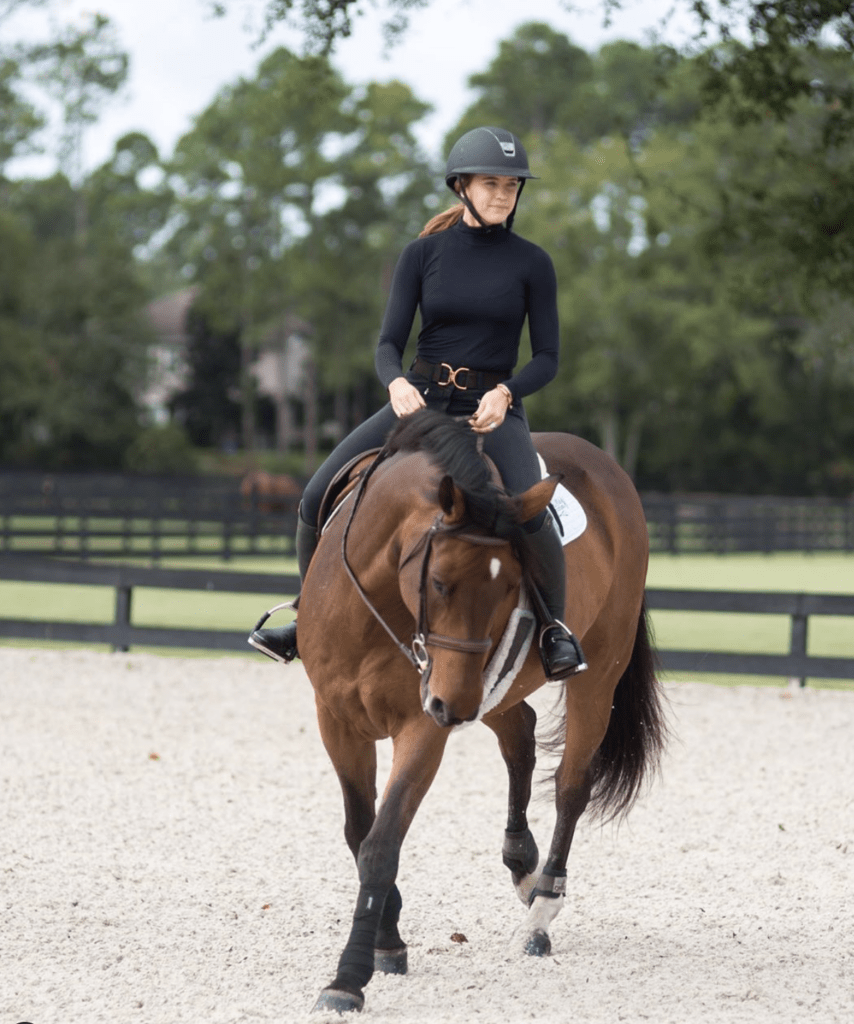Do you have a cool, calm and collected horse on a loose rein, but as soon as you go to shorten your reins he/she gets nervous or simply anticipates the trot and doesn’t wait for your command? I have trained a few horses like this!!

There are a lot of things you can do to get your horse to stay relaxed at the walk with a short rein. One of the things you should always do first is consult with your trainer, your vet, or anyone else with extensive knowledge of bits to ensure that the bit you have selected is the happy medium between effective and comfortable to ensure no harm is being done to the horse’s mouth. Another thing to consider is that usually, the horse is associating anxiety or anticipation with contact, so when the reins are shortened that cues them a pass change is coming. In reality, there are a lot of times when we are wanting to work with the horse at the walk on contact and a relaxed pace should be an option. Please note: This is just what has worked for me, so if these tips can be helpful, great! I’d check in with your trainer or vet if you have questions! I’m always here, too.

1. What I like to do to start introducing this concept to my horse is to work on transitions. I will halt and walk forward several times while incorporating circles, all while my horse is in frame. Putting a horse in frame is a whole other topic in and of itself, but for now, consult your trainer if you are struggling to put your horse in frame at the walk. The quickest way I can explain it is a “leg to hand” action where you are pushing your horse forward with leg pressure into the contact of your hand. This contact is even with special emphasis on a constant outside rein. The inside rein can be used to take a give to check-in with your horse’s position. Having a horse in frame at the walk keeps them focused and allows them to warm up and use their entire body! The transitions help the horse to start understanding and responding to my aids: both hands, both legs, my seat and my voice.
2. At this point, backing up can be a super effective tool for this specific issue; backing, if done properly, can also be extremely helpful for your horses back and hind end in general! To back up your horse, I like to ask my horse to halt. Once he/she has halted, I slightly soften my reins for a quick reward. Then I increase my hand pressure while also adding leg pressure so the horse moves forward into the contact and because the contact doesn’t allow them to move forward, they send that energy in a backing motion. If your horse won’t back up for you, try getting him/her to back up while you are not riding. Sometimes, horses don’t back up because of something going on physically, so consult your trainer or vet if you run into any issues.

3. The next thing I like to do is to keep the horse interested and focused on what I am asking him/her to do. I will do several circles as I mentioned in step one, along with several changes of direction, weave in and around jumps, or you can set up cones and work around those; anything to engage your horse at the walk instead of thinking about the “T” word!
4. I have also found talking to a nervous horse can be very helpful. Sounds weird to type out, but in a nice lower tone, I will say, “Good boy/girl, easy, that’s a good pony.” Phrases for you horse to hear and in result, take a breath and relax and work. Another thing you can do is take a deep breath yourself! Horses are extremely sensitive animals and can feel when you are nervous or distracted.

5. The final thing I do is to work on lateral work. Instead of harnessing that energy for forward momentum like a nervous or anticipating horse may do, I harness it to have them move laterally. A specific lateral movement that I have found that helps my horse relax on contact at the walk is a turn on the haunches both going left and right. I do this at the walk to maintain impulsion or energy. One thing I like about this is that the horse is getting used to and accepting leg at the walk without moving faster in any direction, just like my transitions in the first step. To do this movement to the right, I will be walking in a straight line and I will first look to the right. I will then shift both my left and right rein slightly to the right, and then I will engage my left leg. While still moving in a forward direction, my horse’s legs starting with the front left will cross over the front right and will pivot on the hind-quarters. Because I do this at the walk, the haunches aren’t perfectly still which helps me maintain that harnessed energy, while doing the movement correctly.
I have found that these few things have really helped my horses to relax and focus in contact at the walk. Big main point: realize that the walk is purposeful to the exercise of the day and that your horse can relax and work hard in a similar way that they may do at the trot and at the canter.
xo, B